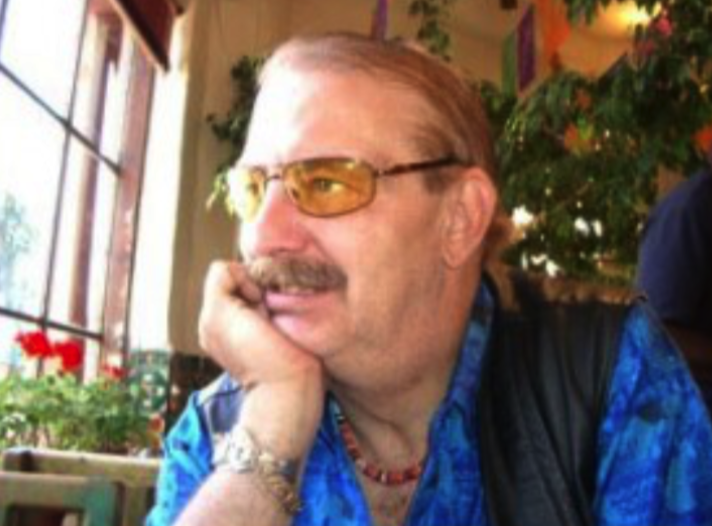The Life of James Widener Ray
James (Jim) Widener Ray was born November 25, 1952 in San Jose, California, to his parents Joan Widener Ray and James Ray Sr. He came from one of the wealthiest and most well known families in Philadelphia—the Wideners—who made their fortune in the meat and railroad industries, and invested in the company that owned the Titanic. Jim was the first of two children born to the Rays, the second being his sister Joan, and he had two half-siblings, Eustice and Leighty, who were born to his mother Joan in a previous marriage.
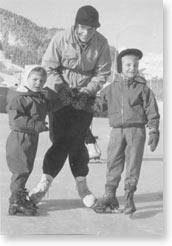
Jim grew up in relative privilege and comfort. The family spent much of their time traveling to exotic destinations around the world. They sailed along the Mediterranean Sea during the summer, and wintered at alpine chalets in Switzerland. Here, Jim and his sister Joan picked up the sport of skiing and soon became naturals on the slopes. In the early 1960s, the family moved to a ranch in Montana. As a teen, Jim developed his skills as an avid photographer, artist and piano player. He had a great fascination for animals and the outdoors, and could often be found ambling outside with his camera.
At the age of 21, Jim received his first parcel of money from the family trust, and moved straightaway to Telluride, Colorado. It took only one visit the year before – when Jim stood by his father as Mae West cut the ribbon for the opening of the ski area – for Jim to know he was home. Skiing was new to the old mining town, and the remote hideaway along with the ski-bum counterculture had Jim hooked. He soon became one of the mountain’s finer skiers, shimmying back and forth on the deepest and the steepest slopes, in a style that his friends later called “The Jimmy Shimmy.”
Jim bought an old Victorian house at the edge of town, and hired practically every known artisan, craftsman, woodworker, carpenter and stonemason to renovate and redesign it. Jim was a master creator when it came to architectural and interior design, and his personal tastes were impulsive, impressionistic, and downright quirky. More than anything, he enjoyed letting artists be artists, and his house redesign gave him a feel for what it was to be a patron of the arts.
In Telluride, Jim had an entourage of acquaintances. Living life on the edge, he threw wild parties and experimented with excess. He came out as a gay man, and had his first struggles with what would later be diagnosed as bi-polar disorder. In spite of the ups and downs, Jim had the time of his life in Telluride. It was there he sparked a few important friendships—some of which lasted a lifetime.
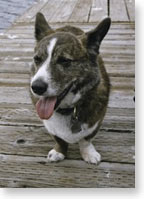
In the early 1980s, Jim moved to Seattle. Around Capitol Hill, Jim became known as quite a character. He socialized with folks in coffee shops and in pubs, visited with friends at his favorite haunts including metaphysical and tarot card shops, and enjoyed the outdoors. He lived in a house he purchased on E. Howe Street on Capitol Hill, walking his Cardigan Welsh Corgi, Jupiter McPooch, on Broadway and in Volunteer Park. While he was living in Seattle his mother passed away and Jim inherited 38 million dollars.
In 1992, Jim finally realized his lifelong dream to own an art gallery. He opened the Eagle Eye Gallery & Emporium, Ltd., in the Loveless Building on Capitol Hill. The gallery provided a space for new and budding artists along with his own works. A talented photographer and artist himself, Jim featured his found-object collages and airbrush paintings, including one he titled Thoughts are Larks Like Us. Jim loved the fact that he was a gallery owner and patron of the arts supporting local artists; for him, it had been a long-time dream. It was more important to help other people than to make money.
To that end, the gallery transitioned into the Raynier Institute & Foundation , which Jim founded in 1994. He endowed the foundation with $52,000 from his personal estate to start. Through Jim’s recommendations, the foundation made a total of $25,000 in grants the first year, in focus areas including Arts and Culture, Education, Health and Human Services, Civic and Community, the Environment and Animal Welfare. As the foundation grew in size and assets, it developed a style of grantmaking that allowed Jim the opportunity to involve himself in projects that mattered to him.
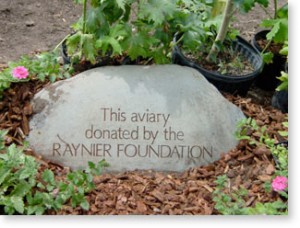
In 1997, he purchased a home on the city’s largest single-family lot—a 3.7-acre parcel of land at 1700 17th Avenue, overlooking the greenery of Interlaken Boulevard and Interlaken Park. He named it Raynier Place reflecting his fondness for his personal foundation. Over his lifetime and more formally in the next 11 years the foundation existed, Jim gave generously to countless causes and people. He took great delight in surprising people with possibilities—whether it be seed money to start a new organization, an event in need of a sponsor, or simply having things “magically” appear for people. In his lifetime, he funded everything from fledgling bookstores to animal shelters, jazz festivals to music museums, spiritual societies to eccentric artists. If something or someone he wanted to support didn’t have the right IRS non-profit designation to fund through Raynier, he would donate money directly anyway. He would just make things happen.
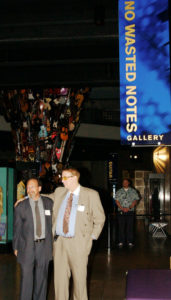
Jim felt a strong desire to help at-risk youth and anyone he saw as the underdog. He was gifted in that he recognized the good in people, no matter what they happened to be going through. He invited people into his life without judgment, and openly shared his resources to encourage people through hard times or simply lend a hand. He often established a certain kind of outreach that otherwise would have never happened.
Jim loved music, and his ability to be a choreographer and a synchronizer brought many great jazz musicians to Seattle for various events and fundraisers. Through a new division called No Wasted Notes, Raynier Institute & Foundation underwrote a number of artists and festivals, including the Seattle Performing Arts Series, Woodland Park Zoo’s ZooTunes, The Santa Fe Jazz Festival, the Telluride Jazz Festival, and Seattle’s Earshot Jazz Festival. In 2005, the Raynier Institute & Foundation granted $1 Million to Seattle’s Experience Music Project (EMP), and the EMP dedicated the No Wasted Notes Gallery in honor of Jim and the foundation’s support.
In his later years, Jim enjoyed traveling the world with friends and skiing at his favorite resorts such as Telluride, Sun Valley, and Whistler, BC. He loved being out on the water and was the proud owner of a succession of luxury crafts, along with a twin-engine plane. But when he just wanted to get away from city life, he would retreat to his quiet waterfront home in Friday Harbor, WA.
Jim died suddenly at the age of 52 on October 9, 2005. In about ten years, he had donated more than $250,000 to causes he felt were important. He left his entire $80 million estate to the Raynier Institute & Foundation. During his lifetime, what mattered most to Jim was making a difference. He wanted to share what he had with those in need, and continually bring joy (and possibilities) to others. Through the Raynier Institute & Foundation–which honors his legacy–to this day he continues to do so.

James W. Ray, the founder of Raynier Institute & Foundation, passed away October 9, 2005. He was a passionate artist in both the visual and musical arts. In the 1990’s he opened the Eagle Eye Gallery to provide a venue for local artists. This led him to formalize his role as a philanthropist by founding the Raynier Institute & Foundation to support non-profit organizations serving the areas of animal welfare, arts and culture, education, environment, and healthcare & human services.
